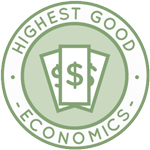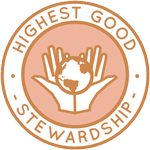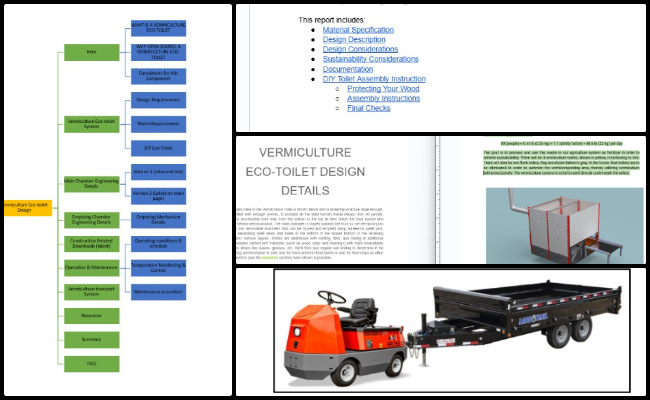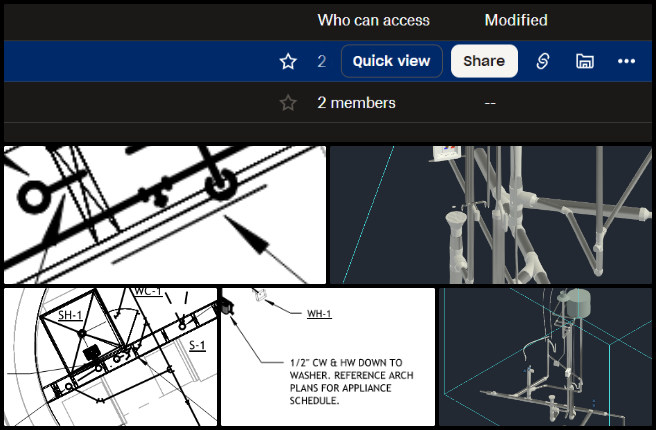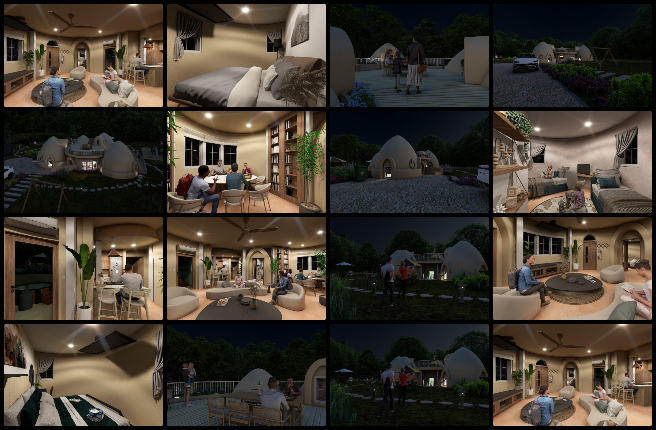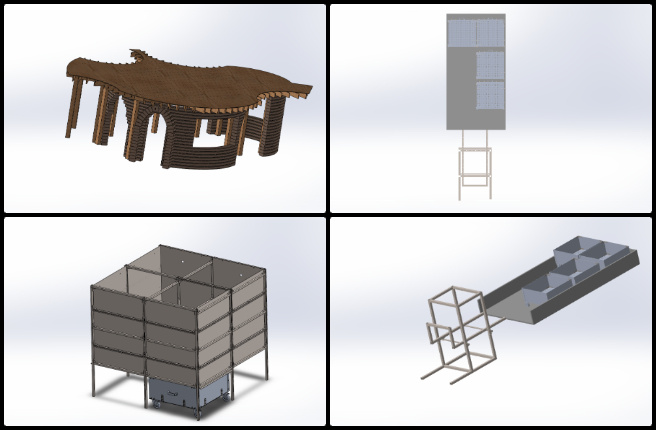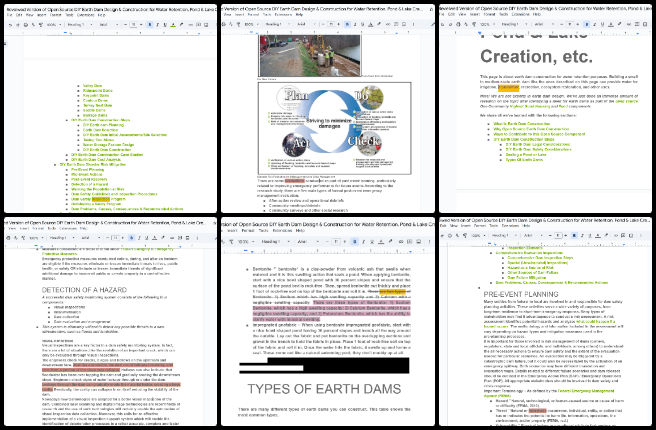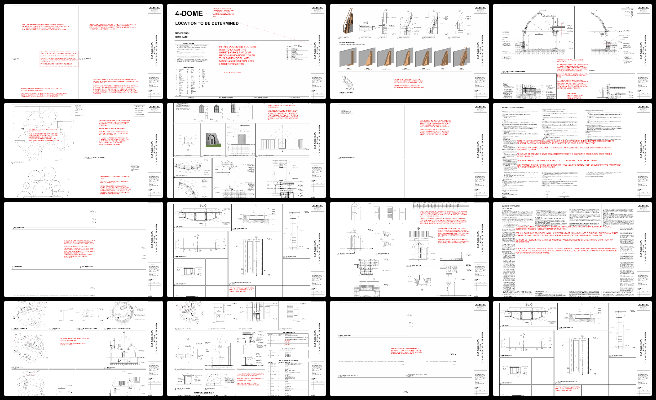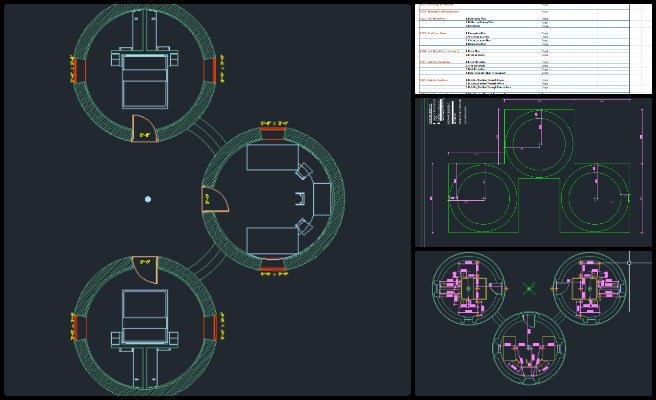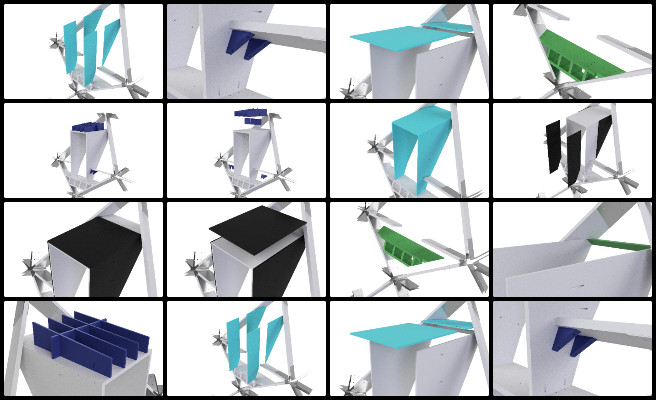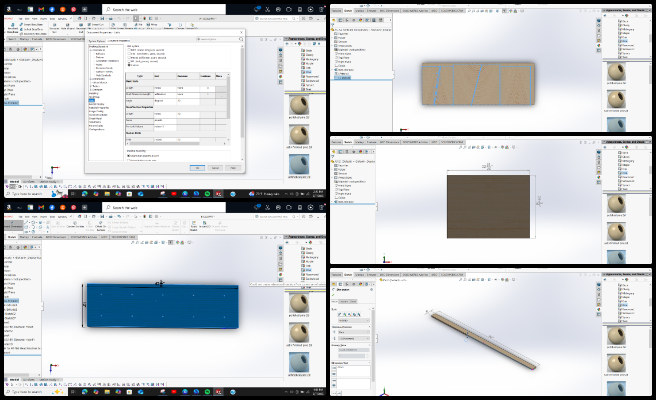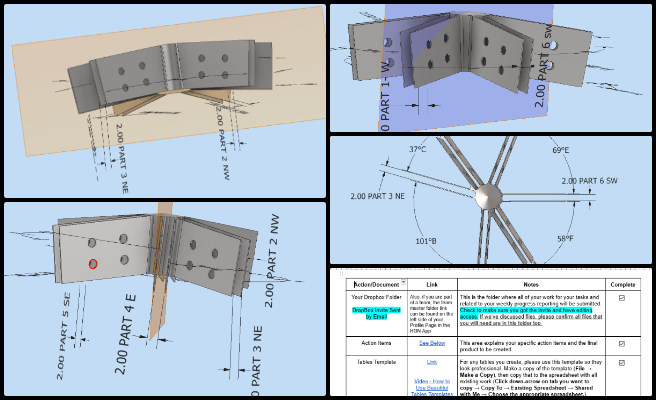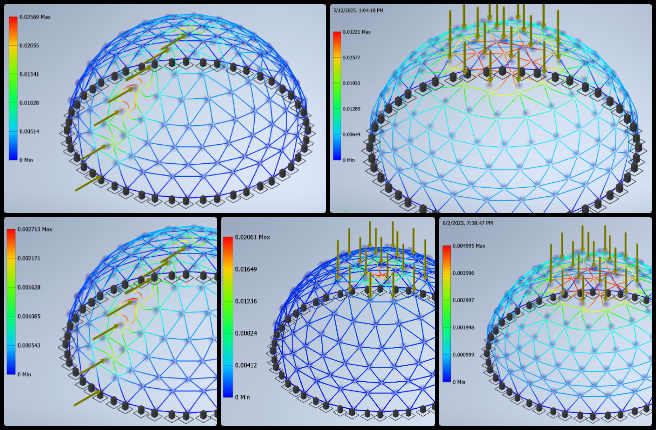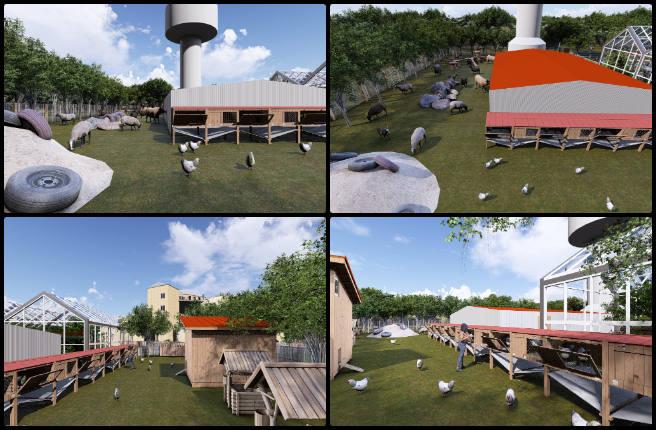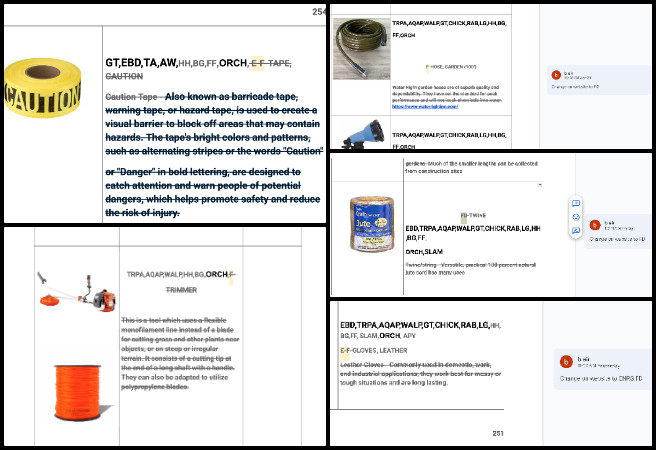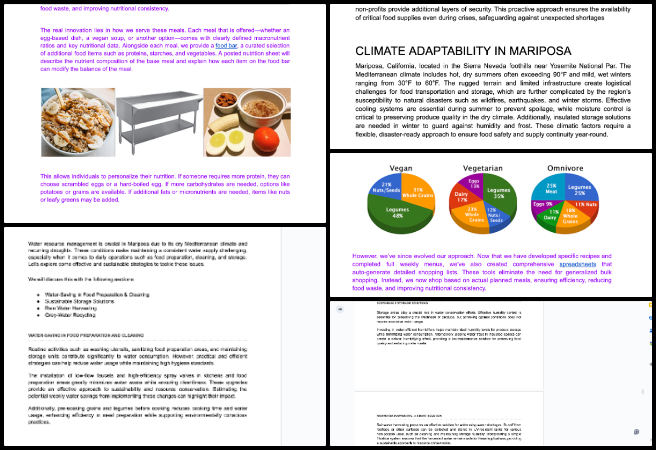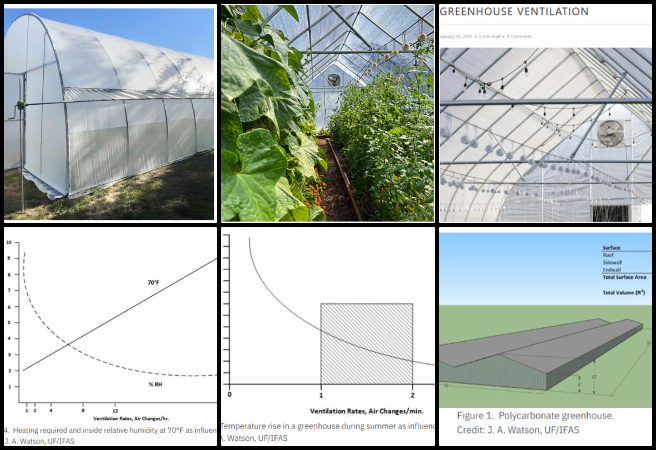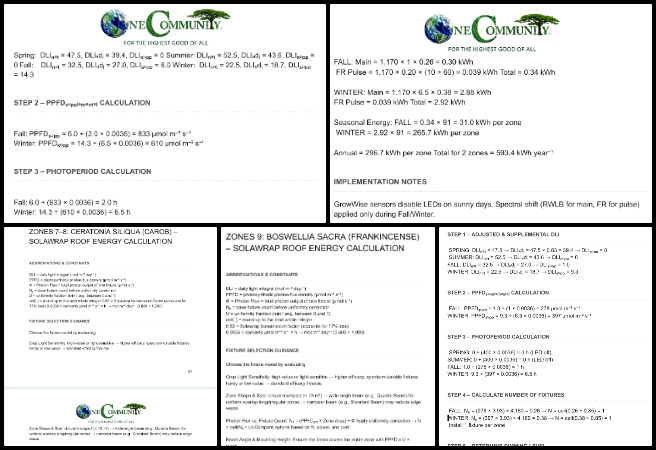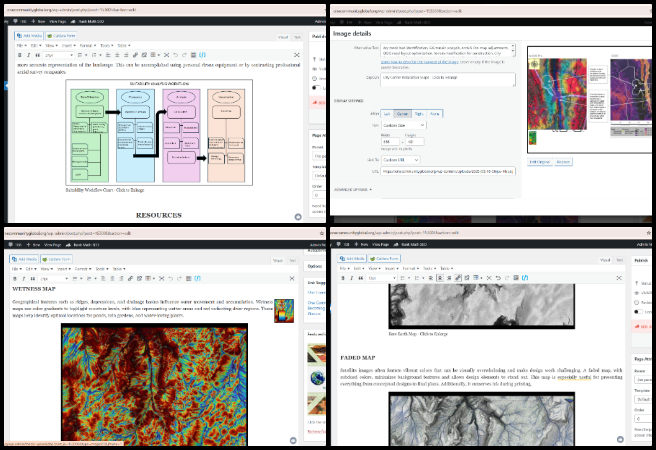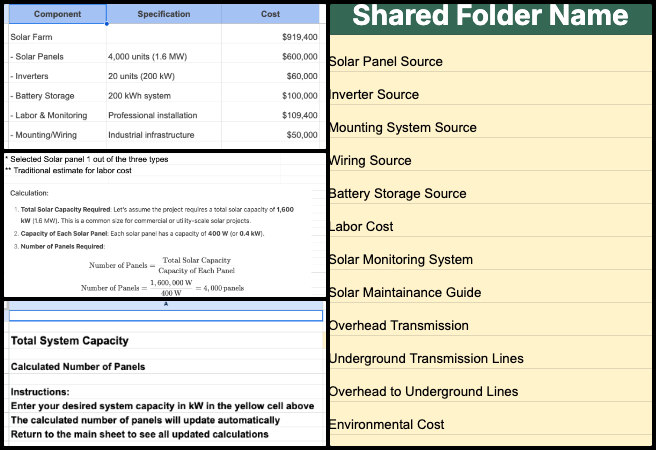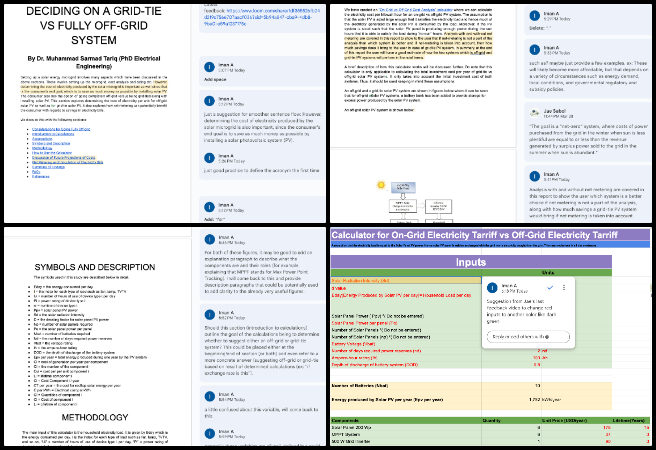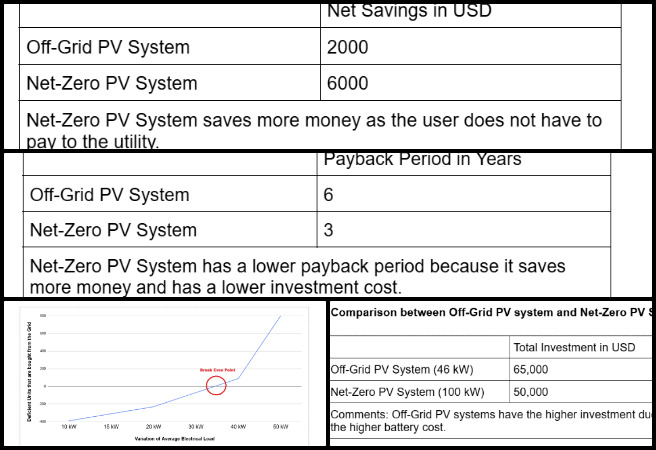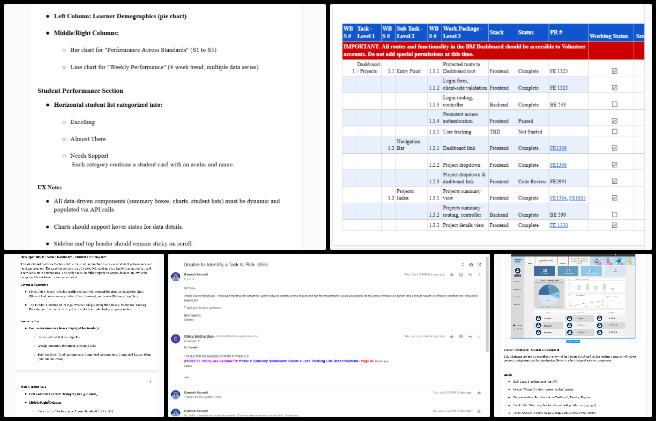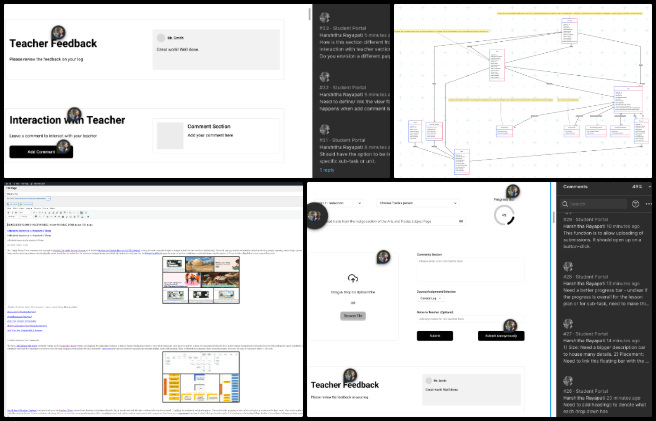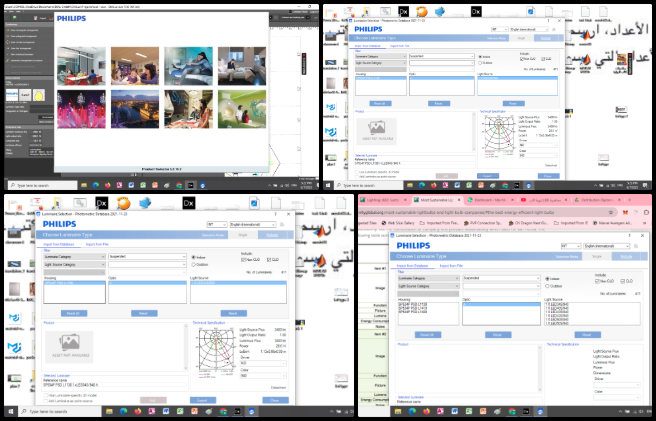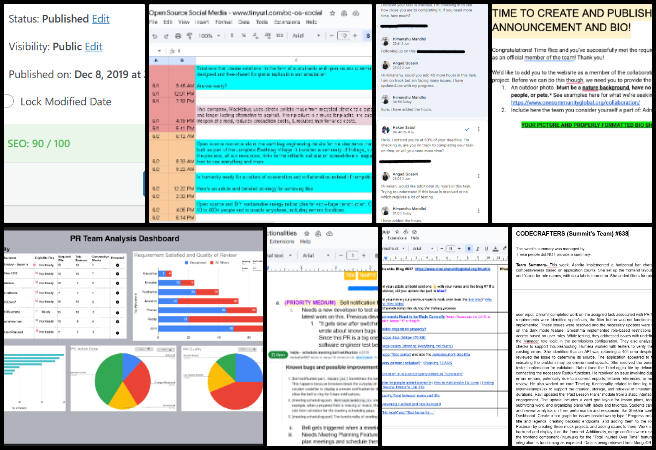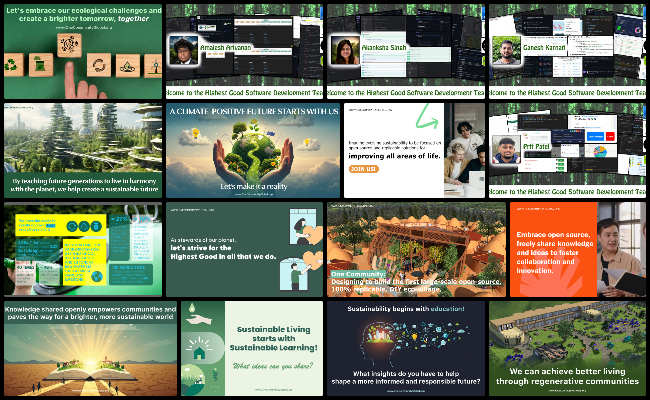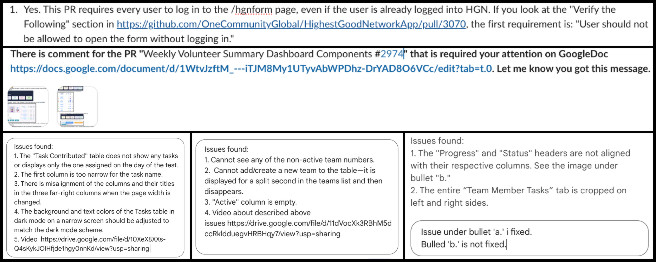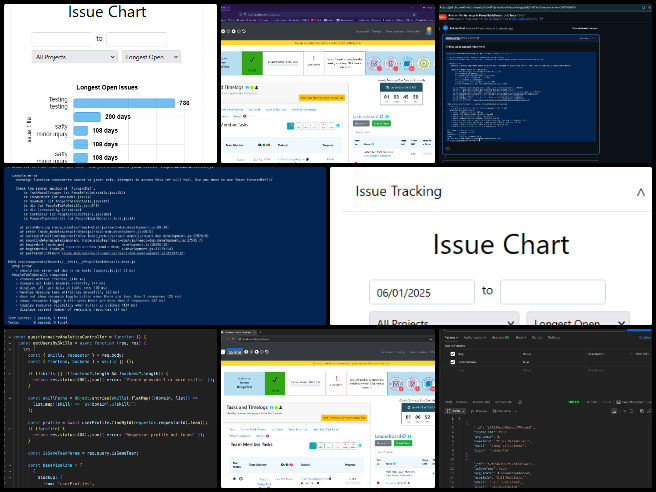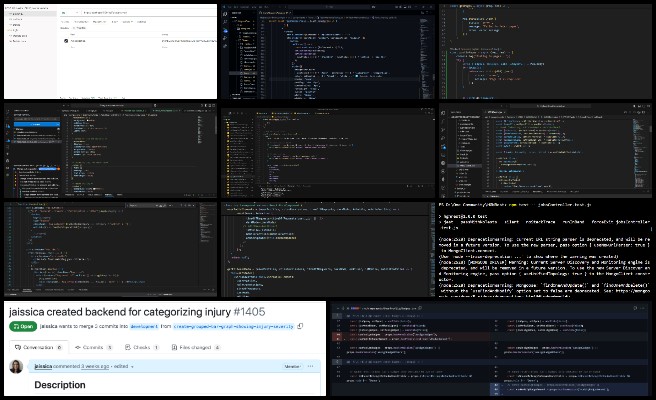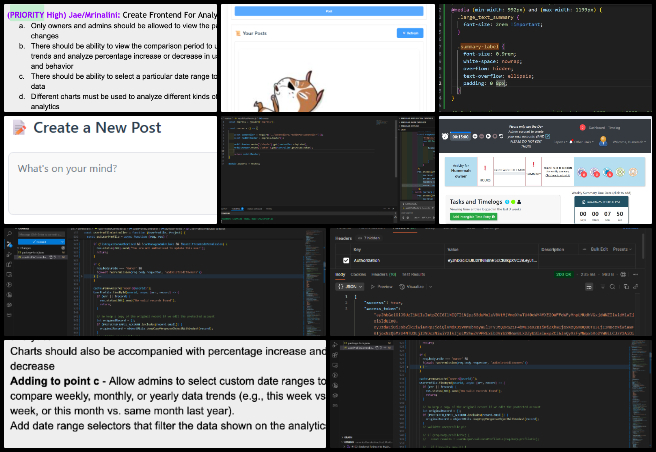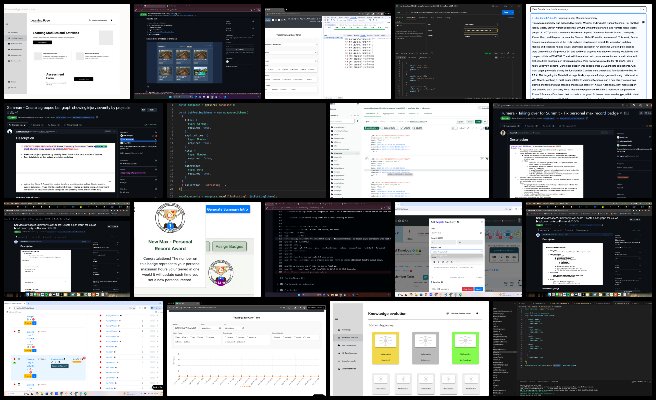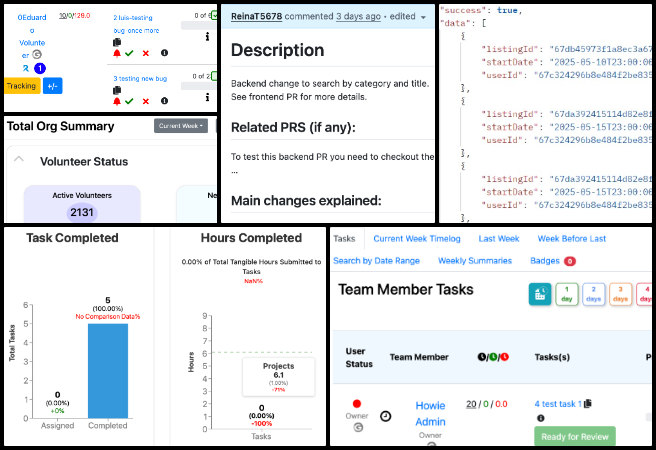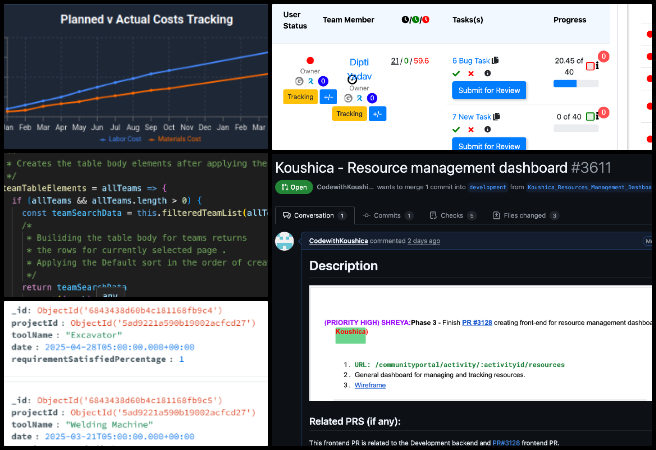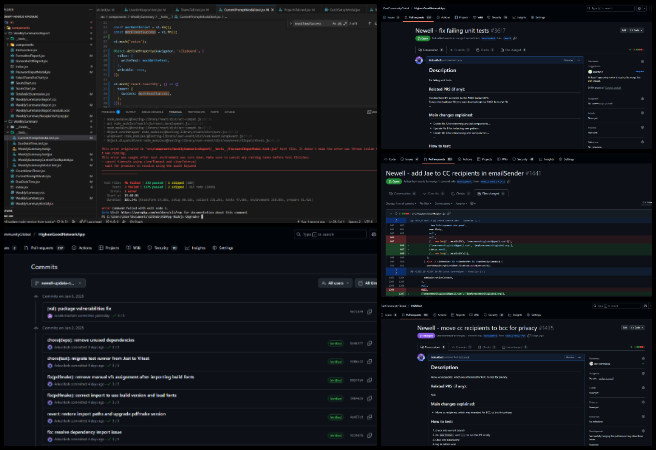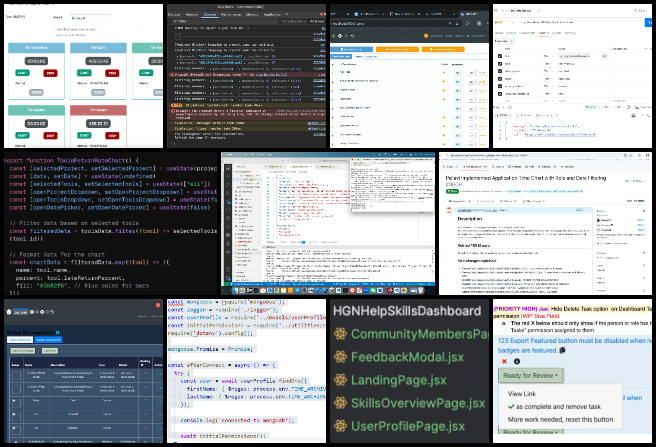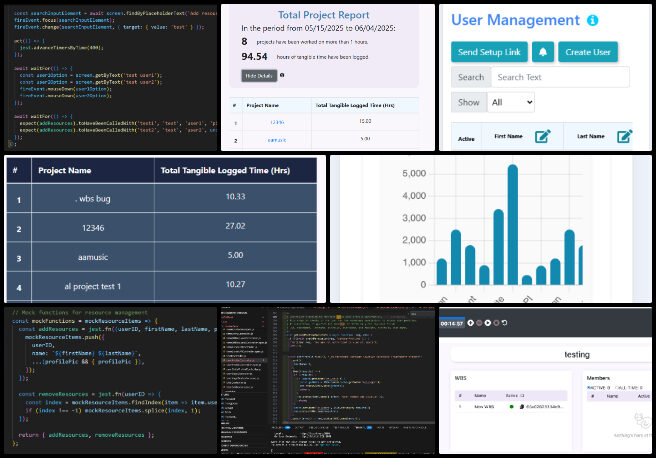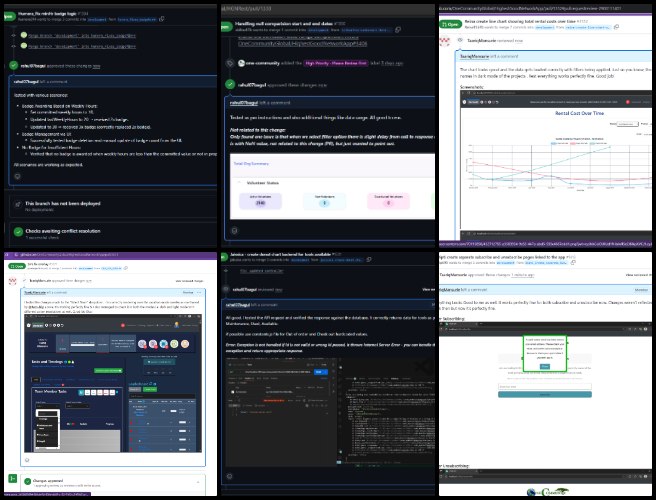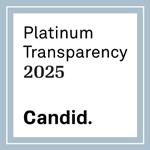Establishing Abundant Community Systems – One Community Weekly Progress Update #638
At One Community, we are establishing abundant community systems to regenerate our planet and create positive change. Our all-volunteer team is focused on sustainable approaches to food, energy, housing, education, economics, and social architecture. By open sourcing and freely sharing the complete process, we aim to build a self-replicating model that inspires a global collaboration of teacher/demonstration hubs, all for “The Highest Good of All.” Together, we are evolving sustainability and fostering global stewardship practices that promote fulfilled living and lasting impact.
- Here’s our project overview
- Here’s our world-change methodology
- Here’s how this becomes self-replicating
- Here’s how we are open source and free-sharing all the do-it-yourself designs

OUR MAIN OPEN SOURCE HUBS
Click on each icon to be taken to the corresponding Highest Good hub page.
One Community’s physical location will forward this movement as the first of many self-replicating teacher/demonstration communities, villages, and cities to be built around the world. This is the June 9th, 2025 edition (#638) of our weekly progress update detailing our team’s development and accomplishments:
Establishing Abundant Community Systems
One Community Progress Update #638
DONATE | COLLABORATE | HELP WITH LARGE-SCALE FUNDING
CLICK HERE IF YOU’D LIKE TO RECEIVE AN EMAIL EACH WEEK WHEN WE RELEASE A NEW UPDATE
YOU CAN ALSO JOIN US THROUGH SOCIAL MEDIA
ONE COMMUNITY WEEKLY UPDATE DETAILS
HIGHEST GOOD HOUSING PROGRESS
 One Community is establishing abundant community systems through Highest Good housing that is artistic and beautiful, more affordable, more space efficient, lasts longer, DIY buildable, and constructed with healthy and sustainable materials:
One Community is establishing abundant community systems through Highest Good housing that is artistic and beautiful, more affordable, more space efficient, lasts longer, DIY buildable, and constructed with healthy and sustainable materials:
- Learn about: Our Upcoming Crowdfunding Campaign
- Learn about the different village models: 7 Sustainable Village Models
- Visit the open source portals for the first two: Earthbag Village OS Hub | Straw Bale Village OS Hub
This week, Adil Zulfiquar (Engineer) continued working on the Vermiculture Toilet website content by reviewing and consolidating existing information that was previously stored across multiple documents. The current webpage content was cross-referenced with the archived materials and integrated into the updated vermiculture Eco-Toilet Website Content document. The structure of the content was reorganized with new segmentation to improve clarity and navigation. Additional sections were added to accommodate new reports, and completed reports ready for publication were placed in their appropriate indexes. One Community’s open source launch for establishing abundant community systems begins with Earthbag Village, the first of seven planned villages providing housing. See below for some of the pictures related to this work.
Derrell Brown (Plumbing Designer) continued working on the Earthbag Village 4-dome home plumbing and mechanical details. Derrell coordinated with Michaela on Monday to address follow-up items related to finalizing the mechanical and plumbing plans. The work included modeling recent plumbing fixtures to connect to the domestic water supply and updating the Revit model for final review. The modeling process involved reviewing isometric views to confirm that all fixtures were properly connected to the domestic water system. After completing the updates, he sent a final PDF and model to the architect for review as the project nears completion. One Community’s open source launch for establishing abundant community systems begins with Earthbag Village, the first of seven planned villages providing housing. See below for some of the pictures related to this work.
Faeq Abu Alia (Architectural Engineer) continued his work on the Earthbag Village 4-dome home renders. Faeq completed night visualizations of the 4-Dome Home’s interior and exterior by setting up lighting, arranging camera angles, optimizing render settings to balance image quality and processing time, configuring post-processing effects for realism, and generating final images. He reviewed the outputs to ensure shadows and highlights matched design requirements. The Earthbag Village is the first of 7 to be built as the housing component of One Community’s open source plans for establishing abundant community systems. View examples of this work in the pictures provided below.
Karthik Pillai (Mechanical Engineer) worked on refining the waste dumping mechanism for the Vermiculture Toilet facility, incorporating changes based on discussions from the weekly team meeting. A video simulation is being developed to visually illustrate the dumping process and support communication and review efforts. Progress continued on compiling reports related to the main structural components of the facility. Karthik also worked on the Earthbag Village 4-dome cluster roof design, with the final version now confirmed, and began assembling a report to document the completed design and associated analysis. As the first of seven planned villages, the Earthbag Village provides the initial housing within One Community’s open source designs for establishing abundant community systems. See the work in the collage below.
Ketsia Kayembe (Civil Engineer) continued working on the Earthbag Village designs related to Open Source DIY Earth Dam Design & Construction for Water Retention, Pond & Lake Creation. She reviewed the content by suggesting improvements, correcting grammar, spelling, and punctuation errors, making content edits, and verifying the listed sources. She also met with Rumi to discuss her upcoming responsibilities related to updating the AutoCAD files for the Earthbag Village to make them construction-ready. During the meeting, her questions about the project were addressed. One Community’s open source framework for establishing abundant community systems begins with Earthbag Village, the first of seven planned villages providing housing. See below for some of the pictures related to this work. See below for some of the pictures related to this work.
Michaela Silva (Architect) continued working on the architectural details for the Earthbag Village 4-dome home design. Michaela updated the construction document tracker Excel file for use in future phases of the villages. She also created a cartoon construction document set to serve as a template and guide for future One Community projects, outlining the recommended order of drawings to match the flow of construction. The set includes notes on adjustments that may be needed for projects that are larger or more complex. As the first of seven villages in One Community’s open source plan for establishing abundant community systems, the Earthbag Village represents the housing element. See her work in the collage below.
Rumi Shah (Civil Engineer) continued working on the Earthbag Village upgrades to bring our designs closer to construction-ready plans. Revisions were completed and work began on the three-dome structure design, including the creation of the furniture layout, dimension plan, and initial design concepts. The project framework was established to provide direction and a foundation for continued development. Work will now shift to refining the details and progressing the overall design. One Community’s open source resources for establishing abundant community systems begin with the Earthbag Village, the first of seven planned villages providing housing. See below for some of the pictures related to this work.
DUPLICABLE CITY CENTER PROGRESS
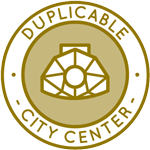 One Community is establishing abundant community systems through a Duplicable and Sustainable City Center that is LEED Platinum certified/Sustainable, can feed 200 people at a time, provide laundry for over 300 people, is beautiful, spacious, and saves resources, money, and space:
One Community is establishing abundant community systems through a Duplicable and Sustainable City Center that is LEED Platinum certified/Sustainable, can feed 200 people at a time, provide laundry for over 300 people, is beautiful, spacious, and saves resources, money, and space:
- Learn about this building and it’s function: Duplicable City Center Open Source Hub
This week, Andrew Chen (Industrial Designer) continued working on the Dormer second-floor window for the Duplicable City Center. He created a 3D animation showing the step-by-step assembly of the model and shared it with Jae for feedback. He finalized an eight-page material drawing for review and worked on drafting assembly instruction slides to gather early input. The instruction slides included a series of rendered models, pagination planning, and identification of parts with screw holes. One Community’s Duplicable City Center stands for establishing abundant community systems through open-source innovation. Browse the photos below to explore this work.
Ariana Virginia Gutierrez Doria Medina (Industrial Designer) continued the analysis and cost estimation of the windows for the Duplicable City Center. The team received feedback on the first assigned task, reviewed the recommendations and notes provided, and began implementing the required changes. The displayed measurements were converted from absolute values to fractional format, which involved updating each dimension individually, and the cutting plans were redrawn to improve wood usage efficiency. Through open-source innovation, One Community’s Duplicable City Center contributes to establishing abundant community systems. Check out the photos below.
Jason Bao (Architectural Designer) continued working on producing renders for the external components of the Duplicable City Center. Optimization efforts focused on preparing project files for high-quality render testing, with specific camera shots selected for this evaluation phase. The rendering process began for these designated views, resulting in the completion of high-quality exterior shots 1 and 2. These finalized renders were submitted for review, and further progress is pending feedback on these deliverables. Technical adjustments continued to align with quality targets for the remaining scheduled outputs. One Community’s Duplicable City Center is a powerful example of open-source work focused on establishing abundant community systems. Browse the images below.
Nupur Shah (Engineer) helped with the manufacturing and assembly details for the City Center Dome Hub Connector Engineering. She carefully reviewed the assigned materials to gain a clear understanding of her responsibilities and to identify areas needing further clarification. She raised questions regarding which specific Inventor file should be used for updating the spreadsheets, the intended content and scope of the manufacturing document, and which product file to reference—especially for the dome components. After watching the reference videos and reviewing Manjri’s latest comments, she worked to locate and navigate the correct product files. While examining the CAD files and cross-checking dimensions, Nupur identified discrepancies between the recorded measurements and those documented by Manjri. Grounded in open-source innovation, the Duplicable City Center advances the mission of establishing abundant community systems. Check out the images below.
Shu-Tsun Huang (Engineer) continued working on the City Center Dome Hub Connector Engineering details. She made significant progress on the structural load analysis by refining both the wind and snow load assessments. She incorporated real-world wind data into the calculation spreadsheet, allowing her to revise the initial wind load model—which had previously yielded less favorable results—and produce more accurate, site-specific outcomes. In addition, she conducted a detailed snow load simulation using actual project data to validate and reinforce her updated analysis. Shu-Tsun also had a meeting with Dipak this week and will revise her model based on his feedback and recommendations. One Community’s open-source Duplicable City Center reflects a commitment to establishing abundant community systems. Explore this in the images below.
Srujan Pandya (Mechanical Engineer) continued helping with the City Center Dome Hub Connector Engineering FEA analysis focusing on advancing the analysis for the updated dome structure and translating the findings into updated web content. Then, after the Tuesday meeting with Jae and Dipak, he created a separate tab in the structural spreadsheet to calculate dome weight based on individual row-wise connector and frame properties, combining them to derive total mass and volume metrics. He gathered physical data by counting components from the latest dome version and calculating material properties using known densities. A meeting was held with Dipak and Shu to clarify revisions needed in earlier analysis outputs and understand how to integrate those changes into the main results sheet. Through open-source development, the Duplicable City Center advances One Community’s mission of establishing abundant community systems. View the photos below.
Yan ‘Jenni’ Zu (Architectural Designer) continued her work on the farm animal area of the Duplicable City Center. She worked on the animal area by introducing a diverse selection of animal models and producing detailed renderings to illustrate their integration within the space. She carefully chose species that complement the existing vegetation and environmental features, positioning each model to achieve a balanced and natural composition. After placing the animals, she adjusted materials, lighting, and shadows to enhance realism, ensuring that fur, skin, and surface textures responded accurately to the scene’s illumination. Jenni then generated high-resolution images from multiple angles, capturing the interaction between animals, landscaping, and built elements. These renderings provide a comprehensive visual reference that communicates the intended atmosphere and functionality of the animal zone. Through open-source development, the Duplicable City Center advances One Community’s mission of establishing abundant community systems. View the photos below.
HIGHEST GOOD FOOD PROGRESS
 One Community is establishing abundant community systems through Highest Good food that is more diverse, more nutritious, locally grown and sustainable, and part of our open source botanical garden model to support and share bio-diversity:
One Community is establishing abundant community systems through Highest Good food that is more diverse, more nutritious, locally grown and sustainable, and part of our open source botanical garden model to support and share bio-diversity:
- Learn about the structures: Hoop House Hub | Aquapini & Walipini Open Source Hub
- See what we’ll be growing: Gardens & Hoop Houses | Large-scale Structures | Food Forest | TA
This week, the core team continued working on the Master Tools, Equipment, and Materials/Supplies document. They continued working on the orchard (ORCH) document, cross-referencing it with the ORCH listing entries. They also modified short acronyms for numerous project categories to longer abbreviations, including changing A to APY, AW to AQAP and WALP, E to ENRG, F to FD, G to LG, and O to ORCH, SA to SLAM, and TA to TRPA. This change was implemented to improve the efficiency of using the Command F function when identifying tools for all individual TEMS entities on the Master Tools, Equipment, and Materials/Supplies list, a process that otherwise requires repetitive scrolling to avoid omissions. These previous website abbreviations were noted and commented on to facilitate the website change. This process was identified as repetitive and labor-intensive, with a recommendation that time could be saved in the future by delaying the inclusion of such information on the website. The Highest Good Food initiative is a key component of One Community’s open source plans, focused on establishing abundant community systems, and exemplifies the organization’s commitment through innovative design and implementation. Below are some of the images showcasing this work.
Chelsea Mariah Stellmach (Project Manager) continued her work on the Transition Food Self-sufficiency Plan menus and customization spreadsheets. She passed the 80-hour milestone with One Community and drafted her bio and selected a picture for the website. She reviewed her contributions to various Highest Good Food reports and revised sections of Tanmay’s Food Procurement and Storage Overview report. Her revisions included adjusting language for a more professional tone and adding images to support the content and improve visual flow. As an essential aspect of One Community’s open source goals, the Highest Good Food initiative supports establishing abundant community systems as a foundation for sustainable living. Below are some of the images showcasing this work.
Dirgh Patel (Volunteer Mechanical Engineer) continued assisting with the Climate Battery design evolutions. He read multiple technical articles and university fact sheets about greenhouse ventilation systems, covering both passive and mechanical strategies. He focused on understanding airflow optimization through roof vents, roll-up sides, and fan placement, as well as the impact of temperature, humidity, and seasonal changes on plant health. He reviewed fan capacity calculations, air change rates, and evaporative cooling methods using mist and pad systems. He studied the importance of maintenance, energy efficiency, and integrating automation such as thermostatic controls. One Community’s open source mission is powerfully reflected in the Highest Good Food initiative, which is focused on advancing and establishing abundant community systems for global benefit. The following visuals highlight key outcomes of this initiative.
Jay Nair (BIM Designer) continued working on Aquapini and Walipini Planting and Harvesting lighting and HVAC design. He continued working on the lighting energy calculations for the individual zones of greenhouse Walipini 1. The focus remained on integrating seasonal DLI data into the standardized calculation format, ensuring consistency and accuracy across all zones. This process supports the overall goal of optimizing lighting performance based on environmental conditions. The Highest Good Food initiative plays a leading role in One Community’s open source platform, promoting and establishing abundant community systems through sustainable and participatory development. Below are some of the images showcasing this work.
Pallavi Deshmukh (Software Engineer) continued working on adding the GIS content to the Permaculture Design page. She completed 11 interviews and submitted the required details. She worked on the web page design by integrating Chris’s GIS content into the permaculture page, using the web design tutorial, and linked headers to the appropriate pages to improve clarity. She reviewed team members’ work and incorporated their contributions to maintain completeness. Pallavi also created blog 637. Fulfilling One Community’s open source objectives, the Highest Good Food project integrates establishing abundant community systems into a larger vision of regenerative living. Her contributions are highlighted in the collage below.
HIGHEST GOOD ENERGY PROGRESS
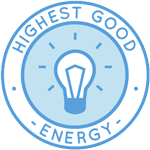 One Community is establishing abundant community systems through Highest Good energy that is more sustainable, resilient, supports self-sufficiency and includes solar, wind, hydro and more:
One Community is establishing abundant community systems through Highest Good energy that is more sustainable, resilient, supports self-sufficiency and includes solar, wind, hydro and more:
- Learn about the open source sustainable-energy foundations: Solar, Hydro, and Wind
- Explore our research into the most sustainable products and companies for saving water and energy: Insulation, Eco-laundry, Lightbulbs and Light Bulb Companies, Doors and Door Companies, Windows and Window Companies, Toilets, Faucets and Faucet Accessories, Urinals, and more.
This week, Dishita Jain (Data Analyst) continued assisting with the Highest Good Energy research and cost analysis for establishing a global eco-balance. She updated charts and resource links for the Energy Infrastructure Cost Analysis and Visualizations project based on team feedback, focusing on phases 2 and 3. She uploaded supporting PDF documents to the shared folder and ensured the reference sheets were accurate and complete across multiple phases. Additionally, she completed administrative work for the OC Training Team by creating a collage, reviewing team member contributions, and rating managers as part of the regular feedback process. One Community’s open source mission is powerfully reflected in the Highest Good Energy initiative, which is focused on advancing and establishing abundant community systems for global benefit. Below are some of the images showcasing this work.
Iman Al Harthy (Environmental Engineer) continued assisting with the Highest Good Energy research. She finalized the initial review of materials related to off-grid versus grid-tie analysis. She reviewed the shared analysis document, the profit calculation comparison for on-grid and off-grid systems, the cost analysis, and the profit calculation document along with the on-grid vs off-grid calculator. Iman also reviewed previous feedback videos on the existing documents and examined the reference tutorial for report formatting. She posted comments, suggestions, and questions to improve the existing work to better align with the original design criteria and goals, with a focus on formatting and user readability and comprehension. She plans to continue posting and incorporating additional elements to improve alignment with project objectives. One Community’s open source mission is powerfully reflected in the Highest Good Energy initiative, which is focused on advancing and establishing abundant community systems for global benefit. Below are some of the images showcasing this work.
Muhammad Sarmad Tariq (Electrical Engineer) continued assisting with off-grid and grid-tied Solar Microgrid comparisons as part of the Highest Good Energy component. He continued working on the integration of a net-zero PV system in the report and on the calculator that calculates profit and net savings for an off-grid and a grid-tied solar PV system. He used the Excel sheet calculations to vary the PV system radiation, sun hours, and average electrical load to see where no more units were required to be bought from the grid on a net-zero basis. He started calculating the net savings, payback period, and total investment for a net-zero PV system. Driven by its open source philosophy, One Community created the Highest Good Energy initiative to pioneer sustainable practices through advancing and establishing abundant community systems. See his work in the collage below.
HIGHEST GOOD EDUCATION PROGRESS
 One Community is establishing abundant community systems through Highest Good education that is for all ages, applicable in any environment, adaptable to individual needs, far exceeds traditional education standards, and more fun for both the teachers and the students. This component of One Community is about 95% complete with only the Open Source School Licensing and Ultimate Classroom construction and assembly details remaining to be finished. With over 8 years of work invested in the process, the sections below are all complete until we move onto the property and continue the development and open sourcing process with teachers and students – a development process that is built directly into the structure of the education program and everything else we’re creating too:
One Community is establishing abundant community systems through Highest Good education that is for all ages, applicable in any environment, adaptable to individual needs, far exceeds traditional education standards, and more fun for both the teachers and the students. This component of One Community is about 95% complete with only the Open Source School Licensing and Ultimate Classroom construction and assembly details remaining to be finished. With over 8 years of work invested in the process, the sections below are all complete until we move onto the property and continue the development and open sourcing process with teachers and students – a development process that is built directly into the structure of the education program and everything else we’re creating too:
- Program Overview: Education Open Source Hub
- How the components work together in designing human orchestrated eco-abundance: How to use the Education for Life Program
- Lesson Plans for Life – Lesson Plans How-to
- Foundations of Outstanding Leaders, Teachers, and Communicators
- Curriculum for Life
- Teaching Strategies for Life
- Learning Tools and Toys for Life
- Evaluation and Evolution
This week, Chitra Siddharthan (Data Analyst and Team Administrator) continued focusing on preparing the weekly summary, blog, and Dropbox files for team Code Crafters for week 637 and reviewed work submitted by Olimpia and Keerthi. After returning from a week off, she handled pending emails and Slack messages related to tasking and time logging, ensuring that pull requests were properly documented. She reviewed the full Phase 2 document to identify unclaimed tasks and informed Jae about one task that had not been added to the system. Chitra contributed to the Phase 2 User Manual and continued updating the Phase 2 Work Breakdown Structure document to ensure all pull requests and descriptions were accurate. Additionally, she worked on the Figma description and provided guidance on UI/UX elements for designing the Teacher-Student Snapshot Page. The One Community approach to establishing abundant community systems uses sustainably built classrooms as a model for creating lasting, planet-wide change. See the collage below for her work.
Harshitha Rayapati (Program Manager) continued work on detailing deliverables for the Highest Good education software platform, outlining various components, developing Figma designs, and expanding the visual layout of the student dashboard. She focused on resolving issues with the top navigation bar in collaboration with Anuneet and provided instructions and suggested improvements for the teacher dashboard based on navigation flows. She coordinated with Siddhartha to address backend model updates necessary to support front-end views such as student lesson plan pages, data dashboards, and filtering features. Working alongside Ravi, Harshitha contributed to building front-end dashboard views, refining the lesson plan screen with to-do items, and initiating implementation of student task logging and comment features for teachers. She also detailed the layout and behavior of the side navigation bar views for the student dashboard. Additionally, she compiled the weekly blog update, reviewed the Graphic Design Team and Highest Good Housing Team’s weekly progress, edited the blog page, and created collages. The One Community model of establishing abundant community systems, exemplified by sustainably built classrooms like this, represents sustainable change for the whole planet. See the collage below for her work.
Mai Mohamed (Electrical Engineer) continued working on drawing the building and its rooms, determining the story heights, and establishing the scale and X-Y coordinates to add spaces identified as classrooms. She selected the Philips catalogue for use and reviewed its contents to identify product specifications relevant to her project. She compared lighting options based on wattage, lumens, and efficiency ratings, noting available technical data sheets for selected items. Mai identified appropriate models for both indoor and outdoor applications, considering compatibility with existing electrical systems. She also cross-referenced catalogue items with project requirements to ensure they met necessary specifications. Sustainably built classrooms like this exemplify the One Community model of establishing abundant community systems and driving global sustainable change. See the collage below for her work.
Mrinalini Raghavendran (Software Engineer) continued refining and documenting both front-end and back-end requirements for various graphs. She focused on debugging and resolving an issue with updates on the Projects page. She started by running the task locally and investigating the source of the error, which remained unclear at first. After continued debugging, she identified that a recursive function was mistakenly used instead of a proper Redux dispatch, specifically impacting the project category updates. Mrinalini removed the recursive logic and refactored the update handlers to use setProjectData instead, which correctly triggered the useEffect hook without causing unintended loops. She also modified the useEffect hook to dispatch modifyProject whenever projectData changed. Additionally, she cleaned up parts of the code by correcting a broken template string and removing unnecessary state handling. By advancing the model of establishing abundant community systems with classrooms like this, One Community provides a replicable example for global sustainable development. See the collage below for her work.
HIGHEST GOOD SOCIETY PROGRESS
 One Community is establishing abundant community systems through a Highest Good society approach to living that is founded on fulfilled living, the study of meeting human needs, Community, and making a difference in the world:
One Community is establishing abundant community systems through a Highest Good society approach to living that is founded on fulfilled living, the study of meeting human needs, Community, and making a difference in the world:
- Read the Highest Good society overview: Highest Good Society
- Learn about the model for fulfilled living and sharing: A Day in the Life
- Learn about the 4 economic models: RBE | For-profit | Non-profit | Entrepreneurship
- Learn about our open source community collaboration and management software: The Highest Good Network
This week, the core team completed over 51 hours managing One Community’s volunteer work review not included above, emails, social media accounts, web development, new bug identification, and bug-fix integration for the Highest Good Network software, as well as interviewing and onboarding new volunteer team members. They also shot and incorporated the video above that talks about collectively improving the standard of living and how establishing abundant community systems is a foundation of the bigger picture of everything One Community is doing. The image below shows some of this work.
Govind Sajithkumar (Project Manager) continued focusing on analytics and content management for Facebook and Instagram on Meta platforms. He managed social media content by refreshing the feeds and scheduling new posts. He entered content metadata and posted details to the Open Source spreadsheet and documentation system to maintain tracking records. Govind also updated the social media analytics spreadsheet with current performance metrics, audience demographics, and engagement statistics for both platforms. Additionally, he performed PR review team management by providing feedback on team members’ documents, updating the WordPress site with the weekly team summary and collage, and updating the PR Review Team Table and the HGN PR spreadsheet. He also submitted an admin feedback table. This effort supports One Community’s broader mission of establishing abundant community systems. The images below showcase some of this work.
Jaiwanth Reddy Adavalli (Project Manager) continued developing the Job Applicants page along with components of the Highest Good Network Phase 2 and Phase 4 dashboards, including the PR Team analytics section. He discussed possible features and the overall design of the software with Neeharika, created wireframes, and wrote action items to guide further development. As part of the PR review team, he reviewed the pull requests of the volunteer team assigned to him. This project plays an important role in One Community’s commitment to establishing abundant community systems. The following images show his work for the week.
ADMINISTRATION TEAM
The Administration Team summary, covering their work administrating and managing most of One Community’s ongoing process for establishing abundant community systems, was managed by Bhakti Tigdi (Project Manager) and includes Anuneet Kaur (Administrator), Himanshu Mandloi (Engineering Project Manager), Khushie Zaveri (Communication Strategist), Neeharika Kamireddy (Data Analyst), Olawunmi “Ola” Ijisesan (Administrative and Management Support), Olimpia Borgohain (Data Analyst and Team Administrator), Rachna Malav (Data Analyst), and Rishi Sundara (Quality Control Engineer and Team Administrator). The Highest Good Network software is how we’ll be managing and objectively measuring our process for establishing abundant community systems through our social architecture, construction, production, and maintenance processes.
This week, the Administration team contributed to a range of responsibilities including research, project coordination, content development, hiring support, and administrative documentation. Anuneet focused on compiling statistics and reviewing articles for the sustainable toilets graphic process, ensured all members were accounted for in the live blog task, and updated village pages based on new SEO-optimized content and corrected links. She also created and verified bio announcements for volunteers, worked on content and image selection for the Licensing and Accreditation page, and completed a shared navigation bar design in Figma. Himanshu continued to manage daily timelog reviews, followed up on unresponsive team members, created and resolved tasks, and developed a blog post aligned with the organization’s mission. Khushie created creative briefs for the metric system campaign, collaborated with the graphics team, updated the social media calendar, and handled admin tasks such as organizing folders and reviewing blog content.
Neeharika advanced the PR data analysis dashboard by incorporating peer feedback and submitted the revised version for review, alongside completing her weekly administrative responsibilities. Ola supervised manager reviews, confirmed standard completion of team tasks, created new organizational folders, and submitted the weekly admin report. Olimpia completed regular admin duties, revised work based on peer feedback, analyzed LinkedIn engagement data, and refined post content to align with strategy. Rachna was unable to schedule interviews due to timing, but prepared for the upcoming week and continued progress on SEO pages. Rishi created collages, merged individual blogs into a main post, completed SEO work, and tested multiple PRs, including follow-ups on completed and error-flagged items across HGN documentation. This work contributes to One Community’s commitment to establishing abundant community systems. See below to view images of their work.
GRAPHIC DESIGN TEAM
The Graphic Design Team’s summary was managed by Harshitha Rayapati (Program Manager) and includes Aurora Juang (Graphic Designer), Junyuan Liu (Graphic Designer, UI/UX Designer), and Rutal Deshmukh (Graphic Designer) covering their work on graphic designs for establishing abundant community systems. This week, Aurora completed all assigned volunteer bios and eight new social media posts were created to align with the current brand direction. Profile updates followed proper sizing and naming conventions based on past tutorials, and increments were double-checked for accuracy. Feedback from Sara was addressed by updating older tutorial versions to meet current standards, and progress was communicated with Jae to verify details.
Junyuan created social media content by collecting images, testing design options in design software, inserting text, and adjusting layouts for the “Most Sustainable” image. He also brainstormed strategies for future image creation. Rutal joined as a Graphic Design volunteer and completed the onboarding process, including setup and workflow orientation. She worked on graphics for the Metric Campaign, made updates based on feedback, and then created bio and announcement images for software engineers using tutorials. Rutal also updated the site with these bios and tagged Sara for feedback. See the Highest Good Society pages for more on how this contributes to establishing abundant community systems. See the collage below to view some of their work.
HIGHEST GOOD NETWORK PROGRESS
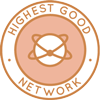 One Community is establishing abundant community systems through open source Highest Good Network® software that is a web-based application for collaboration, time tracking, and objective data collection. The purpose of the Highest Good Network is to provide software for internal operations and external cooperation. It is being designed for global use in support of the different countries and communities replicating the One Community sustainable village models and related components.
One Community is establishing abundant community systems through open source Highest Good Network® software that is a web-based application for collaboration, time tracking, and objective data collection. The purpose of the Highest Good Network is to provide software for internal operations and external cooperation. It is being designed for global use in support of the different countries and communities replicating the One Community sustainable village models and related components.
- Learn about our open source community collaboration and management software: The Highest Good Network
This week, the core team continued their work on the Highest Good Network PRs and confirmed the following fixes: the incorrect colors of the Archive Project window in dark mode were corrected (#2981), the anniversary celebration functionality was redone (#1185), the issue with viewing the dashboard as another user was resolved (#3074), and the functionality to create a new team member was implemented (#3082). The following items were not fixed: UI issues on the People Report page for screen widths of 375px and up (#2650), for which the developer was contacted via Slack; adding active/inactive team member numbers on the Team page (#2850); and issues with the Purchase Request: Materials page in Phase 2 of the Build Menu dashboard (#2764). They also assigned tasks to four volunteers, provided a detailed explanation to one volunteer regarding the missing login function and Dark Mode issues on the HGNForm page, and communicated with nine volunteers on Slack about problems discovered during PR testing. These improvements represent incremental steps towards establishing abundant community systems. See the Highest Good Society and Highest Good Network pages for more on how this relates to establishing abundant community systems. The collage below shows some of their work.
ALPHA SOFTWARE DEVELOPMENT TEAM
This week, the Alpha Software Team, covering their progress on the Highest Good Network software, was managed by Lin Khant Htel (Frontend Software Developer), and the team includes Jiaqi Nie (Software Engineer), Nikita Kolla (Full Stack Developer), and Varun Reddy Mogili (Software Engineer). This software is an internal management and communication platform with the goal of establishing abundant community systems. Lin reviewed and approved PR #3467 after testing it on a local machine and confirming that all test cases passed. Lin also reached out to team members for consultation, reviewed Alpha team members’ weekly summaries, photos, and videos, and handled management duties for the Alpha Team. This work reflects One Community’s ongoing commitment to establishing abundant community systems.
Jiaqi resolved an environment issue that was preventing the backend from running on his local machine. He continued working on the questionnaire backend, fixed the bugs appearing in the console, and used Postman to verify that the API was functioning correctly. Nikita worked on an issue in the Phase 2 Summary Dashboard related to the horizontal bar graph of P5, addressed elements of the application’s dark mode, adjusted the code for production readiness by removing unnecessary code, and performed general cleanup to improve the maintainability and readability of the functions. Varun fixed a failing test in the PopUpBar component of the Highest Good Network app by updating it to check for a custom message and adding a test case for the default template scenario. He cleaned up formatting issues, verified that the setupTests.js configuration for mocked user data was correct, and confirmed that Jest references this file to ensure all PopUpBar behaviors are tested. Varun also worked on PR #2940 to refactor PopUpBar so it always renders the template string from window.viewingUser, removed the message prop, and ran the test suite. Although all tests now pass, the pop-up display still requires adjustment. See the Highest Good Society and Highest Good Network pages to learn more on how this relates to establishing abundant community systems. See some of the team’s work in the collage below.
BINARY BRIGADE SOFTWARE DEVELOPMENT TEAM
The Binary Brigade Team’s summary overseeing advancements in the Highest Good Network software was managed by Aureliano Hubert Maximus (Volunteer Software Engineer) and includes Amalesh Arivanan (Software Engineer), Anirudh Sampath Kumar (Software Developer), Geeta Matkar (Software Engineer), Jaissica Hora (Software Engineer), Nikhil Routh (Software Engineer), Ramsundar Konety Govindarajan (Software Engineer), Sabitha Nazareth (Software Engineer), Samman Baidya (Software Engineer), Vasavi Vuppala (Software Engineer), and Vamshi Gutha (Full-Stack Developer). The Highest Good Network software is how we’ll be managing and objectively measuring our progress in establishing abundant community systems through our social architecture, construction, production, and maintenance processes.
This week, Amalesh wrote unit tests for multiple controller files including jobsController.js, titleController.js, timeEntryController.js, and faqController.js, while also debugging failing test scenarios in support of establishing abundant community systems. Screenshots and videos were documented and uploaded per project guidelines, and tool access was maintained by completing onboarding tasks. Anirudh resolved merge conflicts and reviewer comments for Old Frontend PR Clean Up tasks related to PRs 1793 and 690, aligning his work with broader goals of establishing abundant community systems. He also began addressing UI display issues on smaller screens and started work on implementing PRs 1798 and 692. Aureliano continued building an auto-poster feature for Facebook, Facebook Groups, Instagram, and Threads, focusing on authentication via session cookies and Facebook API scope adjustments, all while contributing to establishing abundant community systems. He resolved page visibility issues, enhanced session persistence, and finalized photo and link auto-posting integration using the HGN API.
Geeta resolved a merge conflict for task 200 involving enhancements to the blue square system that added issuer identification in descriptions, improving team visibility and establishing abundant community systems. After addressing an error, she merged the fix through pull request 3376 into the development branch. Jaissica developed a full-stack injury severity dashboard to show grouped injury data filtered by project, severity, type, and date range, contributing to data-driven insights for establishing abundant community systems. She built an Express API endpoint using MongoDB aggregation and created a responsive Recharts bar chart on the frontend with dynamic filters integrated using Redux. Nikhil progressed on the CSS migration project by converting standard .css files to .module.css, updating imports and classNames accordingly as part of maintaining scalable architecture aligned with establishing abundant community systems. He raised new pull requests, aligned test cases with the changes, and resolved merge conflicts across branches.
Ram diagnosed and fixed a bug related to task addition timing in the WBS feature, where incorrect alerts were triggered after adding tasks post-initial load, helping improve collaborative functionality and establishing abundant community systems. He identified that pageLoadTime was only being set once and corrected the logic so that it updated after each task list load, improving system feedback accuracy. Sabitha created backend functionality for Bitly OAuth, including routes for authentication and callback validation, while configuring ngrok for HTTPS redirection to support scalable integrations that contribute to establishing abundant community systems. She also identified high storage usage caused by large base64 image data in the pinterestschedules collection and proposed deleting the collection and switching to a more efficient image-handling method. Samman finalized and submitted the FAQ section task that had been left incomplete by other developers, ensuring accessible user guidance that supports establishing abundant community systems. He then began work on the Activity Log feature by fetching backend data, implementing error handling, and designing a dropdown UI component.
Vamshi worked on the Summary Dashboard’s line chart feature to visualize injuries over time, integrating the necessary data and debugging rendering issues to enhance monitoring systems for establishing abundant community systems. Chart behavior was refined, but additional functionality and fixes remained under development. Vasavi developed a Supplier Performance bar graph using Chart.js for the Summary Dashboard, configuring it with supplier names and delivery percentages and adding filters for project and date to support real-time visibility in establishing abundant community systems. She also set up a backend schema in Mongoose and populated the database with sample data to test the visualization logic. See the Highest Good Society and Highest Good Network pages to learn more on how this relates to establishing abundant community systems. View some of the team’s work in the collage below.
BLUE STEEL SOFTWARE DEVELOPMENT TEAM
The Blue Steel Team’s summary, presenting their work on the Highest Good Network software was managed by Sheetal Mangate (Software Engineer) and includes Humemah Khalid (Software Engineer/Backend Developer), Linh Huynh (Software Engineer), Ramakrishna Aruva (Software Engineer), and Sai Girish Pabbathi (Software Engineer). The Highest Good Network software is how we’ll be managing and objectively measuring our process for establishing abundant community systems.
This week, Humemah worked on the summary bar.jsx and summarybaar.css files, addressing a formatting issue with the “SUMMARY” text in the Dashboard header. The problem involved the text overflowing its container when the screen width was around 1024px. Changes were made to ensure the text stays within the box across various screen sizes, and the issue is now resolved. Sai began work on the high-priority task of creating the frontend for the analytics page, which is restricted to owners and admins for access and edits. The design includes features such as viewing a comparison period to interpret data trends and calculating percentage changes in user interaction and behavior. The interface supports the selection of specific date ranges for viewing analytics data, and various charts are being added to display trends along with their corresponding percentage change. Admins can select custom date ranges to compare data across different timeframes such as weekly, monthly, or yearly, including comparisons like this week versus last week or this month versus the same month last year. Date range selectors are being implemented to filter the data shown on the analytics charts.
Linh worked on improving the Bluesky auto-poster feature by addressing the login session persistence issue and updating the post creation function to support image uploads. Tasks included debugging a problem where uploaded GIFs were rendered as static images, verifying image MIME types, and adjusting the backend to preserve animations. He also reviewed the Bluesky API documentation related to reposts and likes to support future feature development. Ramakrishna worked on a feature to track submitted dates for weekly summaries by reviewing the existing base code and an associated pull request to understand current behavior. He developed controller methods to capture the epoch time when a specific method is invoked and store it as the weeklySummarySubmittedTime. This logic was added to the putUserProfile method in the userProfileController to ensure accurate reflection of submission times. Sheetal worked on integrating the Reddit API using OAuth authentication. She implemented code for obtaining an access token using an application with OAuth and developed an endpoint that returns the access token, which can be used to make other Reddit API calls. See the Highest Good Society and the Highest Good Network pages to learn more on how their work contributes to establishing abundant community systems. See below to view images of their work.
CODE CRAFTERS SOFTWARE DEVELOPMENT TEAM
The Code Crafters Team, covering their work on the Highest Good Network software, was managed by Sundar Machani (Software Engineer) and includes Ashrita Cherlapally (Software Engineer), Dhrumil Dhimantkumar Shah (Software Engineer), Greeshma Palanki (Software Engineer), Humera Naaz (MERN developer), Pratyush Prasanna Sahu (Software Engineer), Ravikumar Sripathi (Software Engineer), Sai Moola (Software Engineer), and Sravan Kumar Bodakonda (Software Engineer). The Highest Good Network software is how we’ll manage and objectively measure our process for establishing abundant community systems through our social architecture, construction, production, and maintenance processes.
This week, Ashrita created a backend API endpoint /job-analytics to fetch application counts by job role with optional filters for date range, roles, and time granularity. She implemented MongoDB aggregation using Mongoose, including grouping by month and year. A bug was identified where the model did not connect to the correct collection, which she resolved by explicitly setting the collection name. To avoid aggregation errors, she added a $toDate conversion and handled missing or null datePosted values. Dhrumil completed work on PR #3612, which added dark mode support to the bidding homepage. After that, he began addressing PR #1371, which has been encountering a backend node error. Progress on this task has been slower due to limited experience with backend development. In addition, he started reviewing task 793, which involves drawing a horizontal bar graph to display the most expensive or loss-making open issues. Greeshma resolved multiple issues that were preventing the application from launching in the development environment, including errors caused by a corrupted node_modules folder and an outdated lockfile. She worked on a task visibility issue that remained unresolved and attempted to implement automatic time updates, which did not yield the expected results. Additional troubleshooting addressed errors such as spawn react-scripts ENOENT and notsup Unsupported engine for [email protected] through dependency reinstalls.
Humera reviewed and verified test cases related to totalcat, minhour, personal max values, and scheduling conflicts to confirm expected system behavior. She collaborated with Rahul on testing efforts and addressed backend issues in the schedule meeting feature by fixing logic errors affecting conflict detection and removal. The related frontend updates remain pending, and she communicated the necessary changes to the appropriate team members. Pratyush reworked the labor cost backend task by updating the controller, models, and router files to align with the new requirements. He created five API endpoints: one to create a labor cost entry using project name, task name, date, and cost; one to retrieve all labor cost data from the database; and three others to filter data by date, project name, and task name. Each endpoint was tested using Postman to verify proper functionality, and results were confirmed by checking data updates in MongoDB Compass. Ravikumar developed the interactive flow for a student dashboard, focusing on visualizing academic progress and integrating past lesson plans. His work included studying the concept of knowledge evolution and applying it as a feature within the dashboard. He created wireframes that use “education molecules” to visualize a student’s learning journey. These molecules change state to show progress: gold indicates a completed lesson, color indicates a lesson that has not been started, and a greyed-out state indicates a lesson in progress.
Sai Shekhar completed the task “Phase 2 Summary Dashboard: Create a bar graph for issues breakdown by type” and created two pull requests for it: frontend PR #3606 and backend PR #1438. A new task was then started: “Phase 2 Summary Dashboard: Create a bar graph showing risk profile of projects.” Separate frontend and backend branches were created for this task. On the backend, a schema was made for the risk profiles of projects, and work is currently ongoing on the controller file to create endpoints for it. Sravan worked on retrieving injury data from MongoDB, but the limited dataset impacted the clarity of the chart visualization. Additional data was added to support testing and improve how the chart displays trends over time. Work continued on the user interface, focusing on refining the filter functionality and adjusting the date range selection to improve usability and ensure accurate data representation. Sundar worked on multiple aspects of the HGN Software Development project, including updating Node.js, fixing test failures, and resolving merge conflicts in PR #3602. He added dark mode support to various components and pages, addressed CI build issues with Newell, and conducted peer reviews for PRs #3574, #1228, and #3140. See the Highest Good Society and Highest Good Network pages for more on how this relates to establishing abundant community systems. View some of the team’s work in the collage below.
DEV DYNASTY SOFTWARE DEVELOPMENT TEAM
The Dev Dynasty Team’s summary, covering their work on the Highest Good Network software, was managed by Zhifan Jia (Software Engineer) and includes Dharmik Patel (Software Engineer), Mohan Satya Ram Sara (Software Engineer), Shraddha Shahari (Software Engineer), and Vamsi Krishna Rolla (Software Engineer). The Highest Good Network software is how we’ll manage and objectively measure our process for establishing abundant community systems through our social architecture, construction, production, and maintenance processes.
This week, Dharmik worked on implementing and verifying the team code filter set functionality related to PR1274 and PR3281. His tasks included debugging both backend and frontend codebases, reviewing existing implementations, testing the integrated flow, validating related pull requests such as PR1281 and PR3460, recording a video summary, and updating project documentation. Mohan worked on two tasks in the HighestGoodNetworkApp. First, he fixed a display issue where a dropdown overlapped with the “Taking Time Off” content on large screens. This required resolving Husky pre-commit hook issues before reapplying scoped CSS and submitting a pull request with visual comparisons. Second, he added a role-specific, reusable popup “i” icon next to Google Doc links in the Weekly Summaries Reports page by creating utility logic for role-based rendering, integrating styling, and testing the functionality. These changes were reflected in PR3605 and a new branch.
Shraddha focused on enabling email editing on the Profile Page, with work still in progress due to unresolved API issues currently under investigation. She also worked on fixing the Equipment List update button. During this, she faced page loading issues, examined the materials update structure for comparison, and discovered that the updateEquipment API endpoint was missing, halting development until further clarification from Chitra. Vamsi began frontend implementation of the Phase 2 Summary Dashboard by setting up a stacked horizontal bar graph using the Recharts BarChart component. He integrated filter functionality using sample data, addressed logic issues, finalized frontend adjustments, and began backend work by creating a dedicated repository for the task. Zhifan worked on fixing a “failed to update task” issue on the dashboard. He investigated the code sections generating success and failure messages, suspected premature feedback logic, reimplemented the logic, wrote tests, reproduced the issue, compared request payloads, and identified that the root cause wasn’t a permission mismatch, but rather incorrect success feedback being triggered. This was resolved by updating the response handling logic. See the Highest Good Society and Highest Good Network pages for more on how this relates to establishing abundant community systems. View some of the team’s work in the collage below.
EXPRESSERS SOFTWARE DEVELOPMENT TEAM
The Expressers Team’s summary, covering their work on the Highest Good Network software, was managed by Strallia Chao (Software Engineer), and includes Meenashi Jeyanthinatha (Full Stack Developer), Rahul Trivedi (Software Engineer), and Reina Takahara (Software Developer). The Highest Good Network software is how we’ll manage and objectively measure our progress toward establishing abundant community systems through innovative software development, testing, and collaboration. This week, Meenashi updated the BidNotifications function to return the details of the provided email and removed all console.log messages. She ensured consistency between the local and route functions. A “maximum space quota exceeded” error was encountered and resolved. Additionally, she identified that the updateOrder function did not properly update the payments collection, so she modified the logic to reflect the correct amount. A new process was also added to include the authorization ID in the payments collection when card details are not present during order creation. Rahul focused on optimizing the visual layout of the tasks table to better align with design expectations. He reduced the table’s width to improve readability, updated the style.css file, and refined layout elements for improved UI consistency. Several iterations were carried out to finalize these visual and structural enhancements.
Reina submitted two pull requests (Frontend PR #3603, Backend PR #1429) to revise a previous implementation related to Application and Job Posting. Her work included fixing the title search functionality, adding pagination, expanding filter capabilities, and enhancing mobile responsiveness. She also completed a separate task that added a permission setting to allow only owners to edit the warnings list on the user dashboard (PR #3610). Strallia resolved several issues on the Total Org Summary page, including correcting percentage calculations and fixing an infinity error in the Tasks and Hours Completed bar charts. She submitted PR #3599 with centering and styling improvements. On the backend, she contributed updates in PR #1437 to retrieve tangible hour statistics and connected them to the frontend. In PR #3408, she updated the date range filters, fixed a layout issue with the buttons, and resolved an undefined error in the Anniversary Chart. See the Highest Good Society and Highest Good Network pages for more on how this contributed to establishing abundant community systems. See the collage below to view the team’s work.
LUCKY STAR SOFTWARE DEVELOPMENT TEAM
The Lucky Star Team’s summary, covering their work on the Highest Good Network software, was managed by Koushica Bosadi Ulaganathan (Software Engineer), and includes contributions from Barnaboss Puli (Volunteer Software Engineer), Dipti Yadav (Software Engineer), Ganesh Karnati (Software Engineer), Manusha Jyasta (Senior Software Engineer), and Manoj Gembali (Software Engineer). Their work this week continued to support our goal of establishing abundant community systems through collaborative and cross-functional software development. Barnaboss contributed to three major features: the Twitter/X auto-poster, the Volunteer Hours Distribution pie chart, and the Utilization Rate and Downtime bar graph. He resolved API issues, confirmed payload integrity, and implemented Figma-based styling updates. For the dashboard chart, he extended backend logic and verified correct tool usage aggregation. Dipti reviewed and confirmed merge status on an older PR, completed cleanup tasks in response to feedback, and fixed a broken setup script.
Ganesh built the backend for the Tools Most in Need of Replacement dashboard, migrated the frontend chart to Chart.js, and added filters and layout enhancements, including dark mode compatibility. Koushica finalized and submitted a pull request for the Resource Management Dashboard frontend after restructuring code, converting CSS to modules, and resolving layout inconsistencies. Manoj implemented a temporary fix disabling the Feedback Modal and began building the Cost Prediction Line Chart with reusable components, mock data, and filters. Manusha created a responsive donut chart for job posting analytics based on applicant experience levels, integrated date and role filters, and developed a backend API using MongoDB aggregation with robust error handling. See the Highest Good Society and Highest Good Network pages for more on how this relates to establishing abundant community systems. See the collage below to view the team’s work.
MOONFALL SOFTWARE DEVELOPMENT TEAM
The Moonfall Team’s summary, covering their work on the Highest Good Network software, was managed by Newell Newell (Manager) and includes Angad Anil Gosain (Volunteer Software Engineer), Bhavpreet Singh (Software Engineer), and Shashank Kumar (Software Engineer). This week, Angad resolved 404 errors by updating backend routing for GitHub, Dropbox, Sentry, and Slack APIs, and confirmed proper request handling via the Sentry controller. On the frontend, he added conditional logic to the UserProfile.jsx component for access toggling, created modals for add/remove actions with dynamic bullet lists, and fixed issues related to undefined state setters. Angad also addressed TinyMCE-related ESLint errors using a useRef-based approach and enabled dark mode re-rendering. Beyond coding, he assisted teammates with linting issues, commit errors, and NPM logs, while confirming that asynchronous update bugs in task logging were fixed.
Bhavpreet worked on merging and restructuring the backend availability feature, applying changes from an older branch to the current development branch. Shashank implemented and debugged backend endpoints for the Total Cost chart and doughnut component, added a custom date filter, ensured dark mode support and responsiveness, and aligned the HGN Skills Help List component with Figma designs. Meanwhile, Newell migrated the frontend toolchain to Node.js 20, replaced Jest with Vitest for testing, fixed test failures, and developed NestJS backend components to support the frontend upgrades. See the Highest Good Society and Highest Good Network pages for more information on how this contributed to establishing abundant community systems. Below is a collage of the team’s work.
REACTONAUTS SOFTWARE DEVELOPMENT TEAM
Reactonauts’ Team’s summary, covering their work on the Highest Good Network software, was managed by Akshay Jayaram (Software Engineer) and includes Ghazi Rahman (Software Engineer Intern), Gmon Kuzhiyanikkal (Software Engineer), Guirong Wu (Software Engineer), Khushi Jain (Software Engineer), Pallavi Thorat (PR Team O-Sh), Kristin Dingchuan Hu (Volunteer Software Engineer), Peterson Rodrigues (Full-Stack MERN Stack Developer), Rishitha Mamidala (Software Engineer), Rishwa Patel (Software Developer), and Siva Putti (Software Engineer). This software is a foundation of the One Community tracking and management process for a model for establishing abundant community systems.
This week, Akshay fixed the Time Logger issue by correcting the nested members array reference, updated UI elements like the Clear button and role-based colors, improved Stop and Clear button functionality, and managed team tasks including daily tracking and weekly review submissions, supporting the process of establishing abundant community systems. Ghazi refactored task assignment components to use preloaded user data, resolved data mismatches and a failing test case, and added console logs for debugging while contributing to establishing abundant community systems. Gmon fixed the project details issue on the BM Dashboard, updated task visibility with the teams toggle, completed PR #2850 with supporting visuals, and reviewed the project’s architecture—further supporting establishing abundant community systems. Guirong implemented the YouTube auto-poster frontend with activation and routing fixes, connected it to backend uploads, and updated the Weekly Progress Update email template with image and sending fixes, contributing to establishing abundant community systems.
Khushi completed the Job Posting Page Analytics chart, addressed PR feedback on the Event Management Page, and ensured UI consistency across updates while helping to establish abundant community systems. Kristin updated unit tests, investigated a time entry bug, fixed a page freeze in PR #2934, and opened PR #3613 with header enhancements, continuing efforts toward establishing abundant community systems. Pallavi fixed JobFormBuilder integration by enabling dynamic form IDs and CRUD functionality, finalized a dynamic horizontal bar chart, resolved date filtering bugs, adjusted CSS, and addressed backend copying errors through a troubleshooting meeting—all supporting establishing abundant community systems. Peterson resolved checkbox state delay issues on the Badge Management page, ensuring instant updates and advancing the work of establishing abundant community systems. Rishitha refined the “Set Final Day” permission in User Management, defaulting access to Admin and Owner roles and completed close-out tasks—all contributing to establishing abundant community systems. Rishwa integrated backend survey data to create a responsive, authorized user skill radar chart with tooltips for dashboard clarity, aiding in establishing abundant community systems. Siva limited Delete Task access by permission and aligned team creation functionality, further supporting establishing abundant community systems. This work helps One Community’s mission of an open-source paradigm for ecological living. See the collage below to view the team’s work.
SKYE SOFTWARE DEVELOPMENT TEAM
Skye Team’s summary, covering their work on the Highest Good Network was managed by Olimpia Borgohain (Data Analyst and Team Admin) and Luis Arevalo (Software Engineer). The team includes Anthony Weathers (Software Engineer), Gopikalakshmi Asok Kumar (Software Developer), Julia Ha (Software Engineer) and Prit Patel (Software Engineer). The Highest Good Network software helps manage and objectively continue to support by establishing abundant community systems focusing on social architecture, construction, production, and maintenance processes to build sustainable and thriving ecosystems. This solution is portable, scalable, and ideal for off-grid or sustainable living communities.
This week, Anthony submitted a Pull Request that updated the Manage User Permissions feature by adding visual indicators for changes, enabling full permission toggling via category buttons, and correcting the info modal. He identified a backend issue and implemented a fix to ensure permission changes appear correctly in the logs related to establishing abundant community systems. He also modified the Reports section by renaming “Total Logged Hours” to “Total Tangible Logged Hours,” adjusting the logic to exclude intangible time from the totals. Additionally, he resolved a merge conflict in PR #3519 (Enhanced Link Handling for Figma URLs) and updated the associated pop-up UI. Gopika clarified two tasks with Jae. For the “Old Frontend PR Clean-Up Task – PR2184,” she confirmed that all necessary updates were already included in development, so the ticket could be closed without merging. For the “Report Issue” task, she discovered the missing bar graph in Production was due to zero users in the dataset. She traced the data source to the getUserProfileBasicInfo function in the UserProfileController and identified a potential permissions issue affecting data visibility.
Julia improved responsiveness on the Weekly Summaries Report and User Management pages. She repositioned the pie chart for better visibility, fixed button alignment issues, and improved element expansion on smaller screens. After testing, she submitted Pull Request #3607 for production. She also updated the “Total Material Cost Per Project” bar chart by truncating long project names, enabling horizontal scrolling, refining label styling, and connecting it to backend data. Prit resolved a test case error during a commit by creating a new branch, modifying the TagsSearch.test.js file, and writing multiple test cases. After seeking help in Slack and reviewing related pull requests, he applied shared fixes from Jae, which resolved the issue. He then pushed the updated branch, opened Pull Request #3625, and resolved the resulting merge conflicts. See below for the work done on establishing abundant community systems.
SOFTWARE PR REVIEW TEAM A-F
This week, the PR Review Team’s summary for team members’ names starting with A–F and covering their work on the Highest Good Network software was managed by Neeharika Kamireddy (Data Analyst). The Highest Good Network software is a foundation of what we’ll be using to measure our results of establishing abundant community systems. This week’s active members of this team were: Abdelmounaim Lallouache (Software Developer), Carlos Gomez (Full-Stack Software Developer) and Dinesh Vardhan Bonthu (Software Developer). They assisted with the research for establishing abundant community systems by reviewing all the Highest Good Network PRs (Pull Requests) shared in this week’s update. Learn more about how the Highest Good Network measures establishing abundant community systems by exploring the Highest Good Network open-source hub. The collage below shows a compilation of the work from this team.
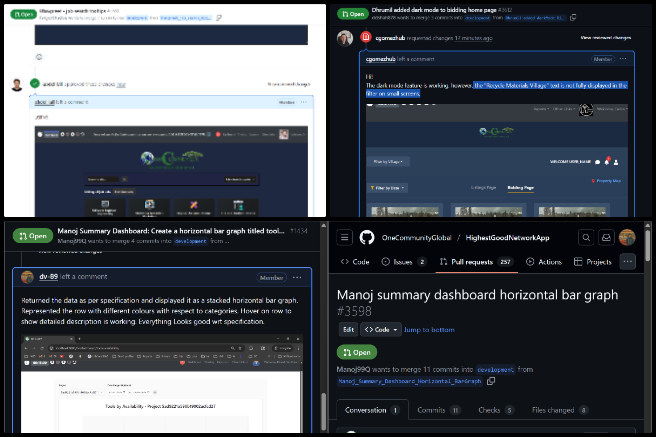
SOFTWARE PR REVIEW TEAM G-N
This week, the PR Review Team’s summary for team members’ names starting with G–N and covering their work on the Highest Good Network software was managed by Govind Sajithkumar (Software Project Manager). The Highest Good Network software is a foundation for measuring our results of establishing abundant community systems. This week’s active members of this team were: Jitesh Parapoil (Software Engineer), Kurtis Ivey (Full Stack Developer) and Nathan Hoffman (Software Engineer). They reviewed all the Highest Good Network PRs (Pull Requests) shared in this week’s update. Learn more about how the Highest Good Network measures establishing abundant community systems by exploring the Highest Good Network open-source hub. The collage below shows a compilation of the work from this team.
SOFTWARE PR REVIEW TEAM O-Z
This week, the PR Review Team’s summary for team members’ names starting with O–Z and covering their work on the Highest Good Network software was managed by Jaiwanth Reddy Adavalli (Software Project Manager). The Highest Good Network software is a foundation for measuring our results of establishing abundant community systems. This week’s active members of this team were: Rahul Bagul (Software Engineer) and Taariq Mansurie (Full-Stack Developer). They reviewed all the Highest Good Network PRs (Pull Requests) shared in this week’s update. Learn more about how the Highest Good Network measures establishing abundant community systems by exploring the Highest Good Network open-source hub. The collage below shows a compilation of the work from this team.
AND WE PRODUCED THIS WEEKLY UPDATES BLOG – CLICK HERE TO SUBSCRIBE
FOLLOW ONE COMMUNITY’S PROGRESS (click icons for our pages)
INVESTOR PAGES
GET INVOLVED
DONATE | WAYS ANYONE CAN HELP | MEMBERSHIP
CLICK HERE FOR ALL PAST UPDATES
 One Community
One Community